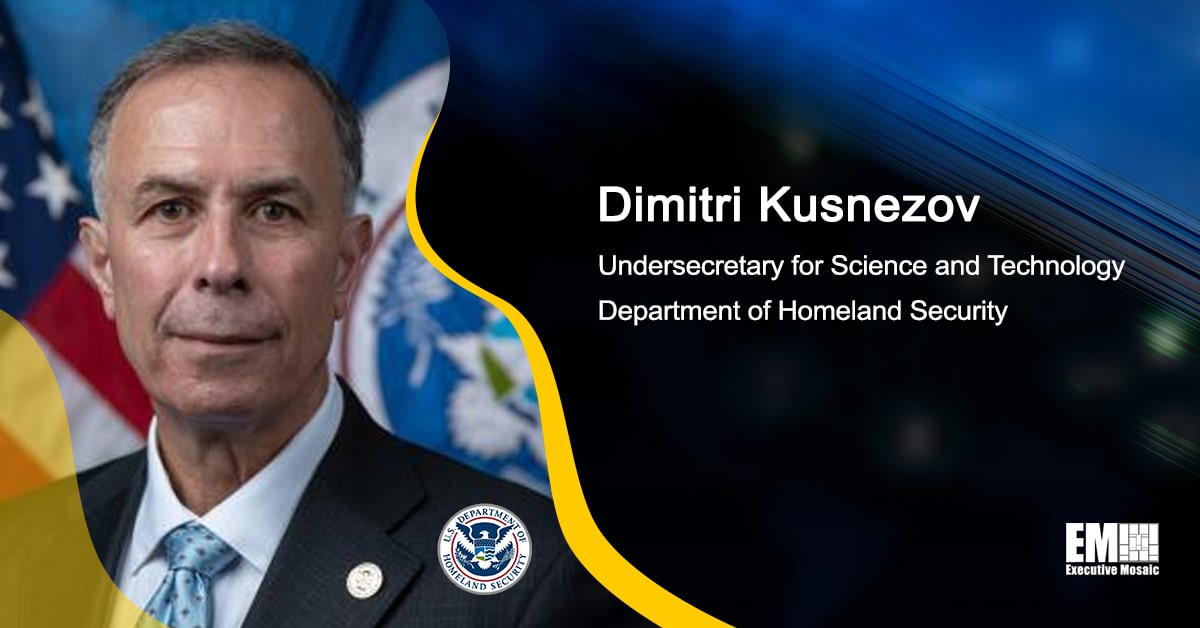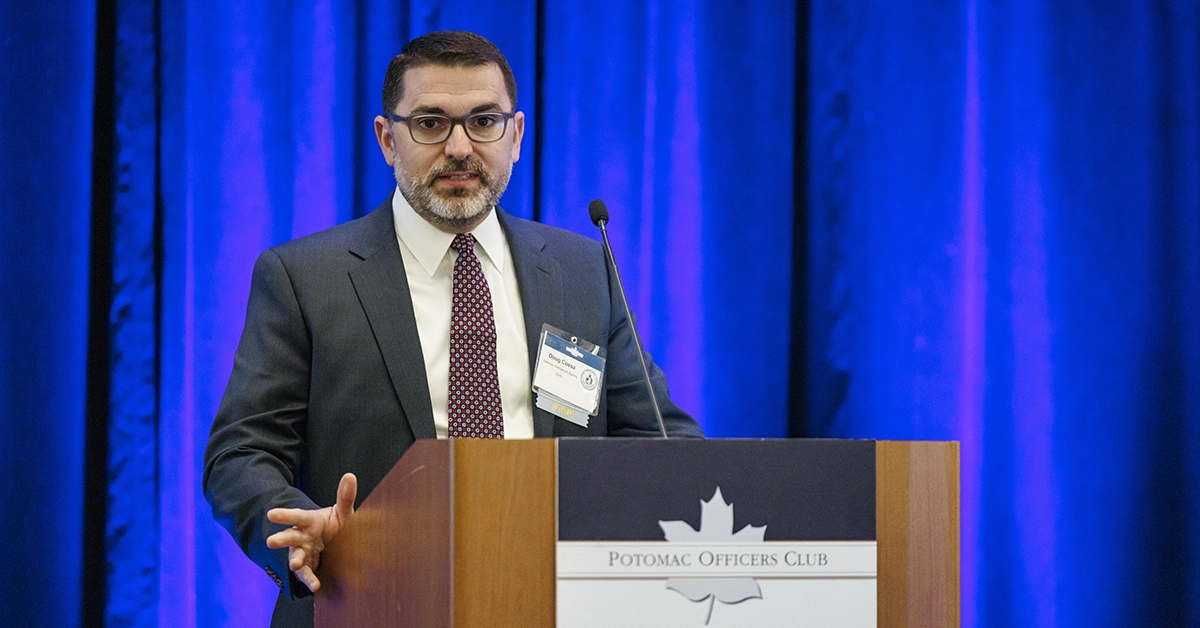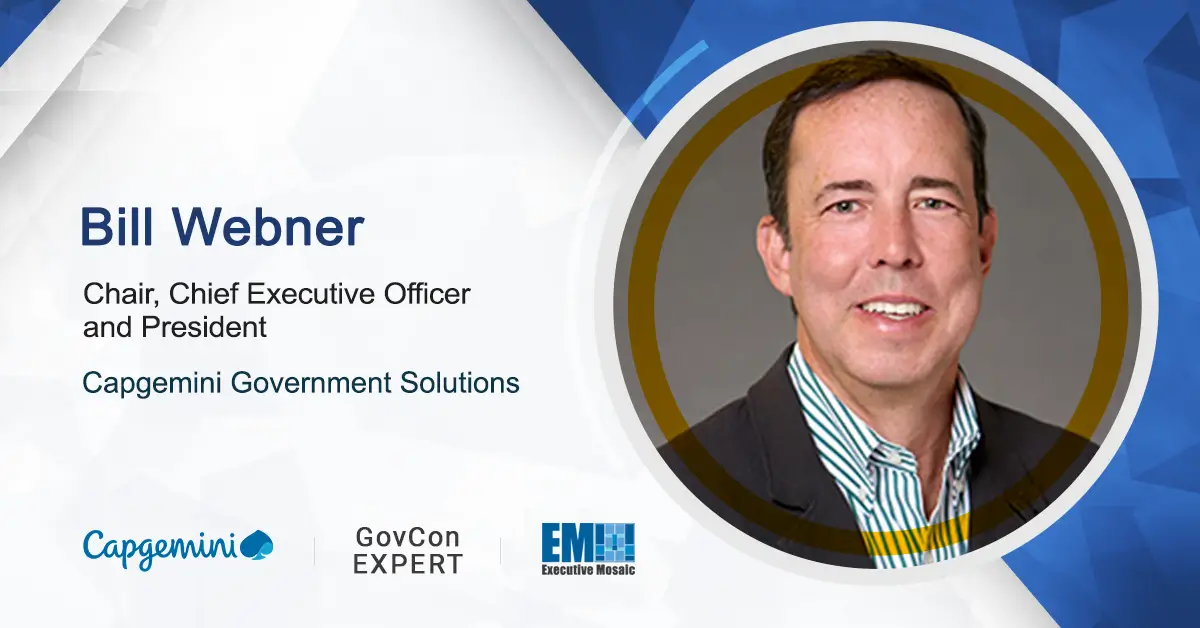The United States is in a transformative era rich with technological innovation and opportunity, but we have to do more to anticipate the threats these emerging technologies may unlock, according to Dr. Dimitri Kusnezov, undersecretary for science and technology at the Department of Homeland Security.
In his opening keynote address during GovCon Wire’s Defending the Homeland: Science & Technology forum, Kusnezov discussed how DHS is thinking about artificial intelligence, quantum and other rapidly evolving technologies that are positioned to shape the future of homeland security.
DHS Sees An AI-Enabled Future
From a business perspective, AI and machine learning can have great impact in things like optimizing workflows and automating burdensome, repetitive tasks. But AI can be even more transformative in other areas, and Kusnezov, like much of the world today, is interested in how the model behind tools like OpenAI’s ChatGPT are laying the foundation for the next generation of AI advancements.
“If you abstract the OpenAI view of critically large data sets, are there things you can do there that you could not do with smaller data sets? Does it help fill in the gaps in investigations, in managing risk at the checkpoints and borders or ports of entry or airports, if we have this corpus of data that we can learn from and identify patterns of risk that help us understand in real time things that otherwise might not surface?” Kusnezov posed to the virtual audience, noting AI’s potential use cases within agencies like the Transportation Security Administration.
As the head of DHS S&T, Kusnezov is also looking at AI use cases beyond the near future and into the long-term, in which smart cities, autonomous systems, AI and quantum may converge to create new possibilities and vulnerabilities alike. Kusnezov noted that protecting the country against these new threats is top of mind for him.
“The adversarial side of AI, from deepfakes and that whole trajectory of credentialing, is one aspect of this big area that I think we have to have more domain awareness of with respect to the broad national security role, domestic and homeland security role of the agency. So I’m trying to get my head around that this year,” he shared.
Quantum Technology in ‘Aspirational’ Stage
While AI and quantum are often referred to similarly as emerging technologies, Kusnezov revealed that the two fields are in very different stages of development and adoption in the country. AI has no underlying “theory,” but we do have the technology for it. Quantum, Kusnezov explained, faces the opposite conundrum: a well-known theory, but no fully functioning (as of yet) technology to back it.
“It is a place where we deeply understand the theory, it’s just largely unsolvable,” he said of quantum. “But it is a place now where there is a lot of interesting promise, not only because the venture capital has really grown this ecosystem, and the government stepped in four to five years ago to push for fostering federal spending on academic pursuit and technology development,” he said.
Despite the tech gaps that still need to be filled, quantum remains a promising area of innovation for the future of the country.
“It is still a little bit aspirational. I think there is interesting opportunity in the quantum space that we have to pay attention to,” Kusnezov noted.
Today’s Tech Development Landscape
Whether in AI, quantum or other emerging technology areas, technological advancement is happening more rapidly than ever. Kusnezov said “we’re in a period of remarkable change” not unlike the tech boom of the 1960s and 70s — but the key difference is that today’s tech buzz is set against the backdrop of the information age.
“We’re in a similar generational moment, but it’s different. It is richer, it is faster, it is more transformative and it touches more parts of the country, more sectors of the economy — all of them, in fact — and all demographics. And so it is more invasive and ubiquitous than the tech sector was in the sixties and seventies,” he explained.
From a homeland security perspective, this faster, more widespread tech environment — and more specifically, the coalescence of emerging technologies — is inherently risky, and in his role, Kusnezov is tasked with anticipating and preparing for these risks.
“I think about the changing world out there, the non-linearities of how people will exploit technologies that will be embedded into the next generation networks, into everything we do, because the commercial drive will pull them into there. So how do we prepare ourselves for that?” he asked.
“We have to question what our constructs are, what our risk models are, what is the impact of changes? Are we on the path to be prepared for potential futures, or should we be thinking a little differently? And what could we put on the table as options to be more prepared for potential eventualities? I can’t forecast what’ll happen. I just see large uncertainties, and I want to be more prepared for all of it.”
How are other federal leaders thinking about the technological landscape of the future? Join the Potomac Officers Club’s 4th Annual CIO Summit on May 16 to hear from the most notable CIOs across government and industry. Don’t miss your chance to hear from GovCon leaders in person! Register here.








